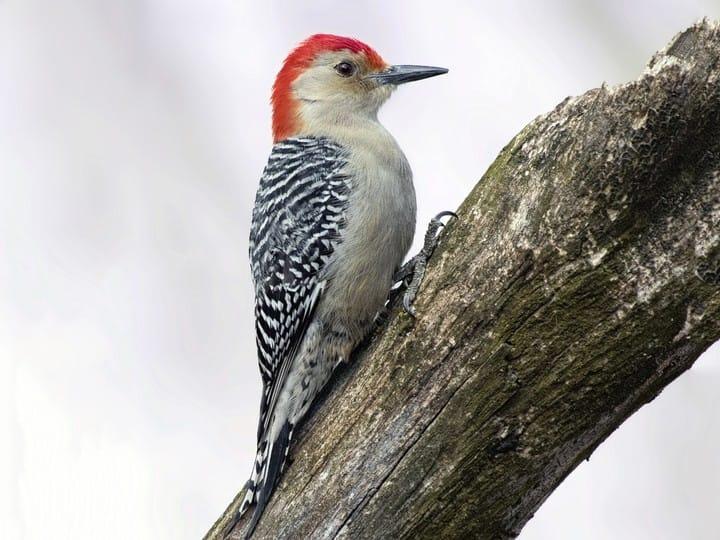Revealing the Keys of Woodpeckers: Behavior, Habitat, and A Lot More
Woodpeckers, with their one-of-a-kind behaviors and specialized adjustments, have long captivated researchers and nature lovers alike. These impressive birds have a series of fascinating keys that dropped light on their survival techniques, environment choices, and elaborate interaction methods. By uncovering the mysteries surrounding woodpeckers' habits and habitat choices, a much deeper understanding of these avian marvels arises, providing a look right into their interesting globe. So, what makes these birds truly exceptional, and just how do they navigate their atmosphere with such accuracy and ability? Let's discover the captivating world of woodpeckers and unravel the enigmatic details that make them such intriguing subjects of study.
Woodpecker Actions Insights
In analyzing woodpecker habits, a fascinating display of specialized abilities and adaptations emerges, clarifying their remarkable ecological particular niche - Woodpeckers in Florida. Woodpeckers, understood for their unique drumming on trees, have a variety of behavior attributes that add to their survival and success in their setting. One crucial actions is their drumming, which serves multiple objectives such as communication, establishing region, drawing in friends, and finding food resources. This rhythmic pecking likewise showcases their amazing toughness and endurance, as they can hammer away constantly at high speeds without causing harm to themselves.
Furthermore, woodpeckers exhibit a distinct feeding habits characterized by their capability to remove pests from tree bark utilizing their specialized beaks. Their long, barbed tongues aid in capturing target, while their solid neck muscle mass give stability and accuracy throughout pecking activities. This feeding technique enables woodpeckers to gain access to covert insect larvae and extract them with amazing effectiveness.
Environment Preferences and Selection
What elements influence the environment choices and selection of woodpeckers? One essential factor affecting woodpecker habitat choice is the availability of appropriate nesting websites. Woodpeckers generally like woodlands with a mix of fully grown trees that give enough possibilities for dental caries excavation.
Furthermore, woodpeckers reveal a choice for environments with an abundant supply of food resources. They are primarily insectivorous, feeding on beetles, ants, larvae, and various other bugs found in decaying timber or tree bark. Consequently, woodpeckers often tend to prefer wooded locations with a diverse insect population to satisfy their nutritional needs.
Additionally, the presence of dead or rotting trees is another key factor in woodpecker environment choice. These trees not only give food resources yet likewise use suitable substratum for cavity excavation. Dead trees are crucial for the upkeep of healthy and balanced woodpecker populaces, as they play an essential duty in the woodpeckers' life process and ecological community dynamics.
Feeding Practices and Diet Structure
Woodpeckers demonstrate a specialized feeding behavior focused on foraging for pests within different environments. In addition to insects, woodpeckers likewise take in tree sap, reference fruits, nuts, and seeds, including variety to their diet depending on the period and accessibility of food sources.
The foraging strategies of woodpeckers are well-adapted to their arboreal lifestyle (Woodpeckers in Florida). Their capacity to excavate wood not just gives them with food however likewise helps in creating nesting dental caries and developing territories. Woodpeckers play an important duty in keeping the wellness of forests by controlling insect populaces and helping in the disintegration of timber. Understanding their feeding behaviors and diet plan structure is important for preservation efforts targeted at maintaining these unique and beneficial birds.
Drumming Seems and Interaction
Using quick drumming audios on various surface areas, woodpeckers utilize an unique kind of communication to signal region borders and bring in friends. This drumming actions is not just a way of interaction yet likewise works as a method for woodpeckers to establish their existence within a certain location. The strength, rate, and pattern of the drumming can share essential details to other woodpeckers in the area.
Woodpeckers utilize drumming audios to reveal their presence in an area and to warn off potential trespassers. The loud and repetitive nature of the drumming offers as a clear signal to other woodpeckers that the location is currently asserted. This helps in minimizing problems and lessening physical conflicts in between individuals.

Survival Adaptations and Specialized Composition

Final Thought
To conclude, woodpeckers display one-of-a-kind actions, such as drumming audios for interaction, click for more and have Get the facts actually specialized composition for survival in their selected habitats. Their feeding behaviors and diet regimen structure further demonstrate their versatility to different atmospheres. By comprehending these elements of woodpeckers, scientists and guardians can better protect and protect these fascinating birds and their environments.